#hr workflow template
Explore tagged Tumblr posts
Text
This is particularly important to have access to trustworthy, professionally designed contract templates in the constantly changing business world of right now. Read more..
#autofill document template#online document templates#business documents samples#pre-filled document templates#business paperwork templates#pre filled document#pre filled business documents#hr documents templates#hr document management systems#hr workflow template#Affordable Document Templates#autofill hr documents templates#legal documents
0 notes
Text
Fixed Asset Management and Software Solution
Fixed Asset Management and Software Solution
In today’s fast-paced business world, fixed asset management is more than a ledger entry—it’s a strategic cornerstone. Leading the way, Impenn offers a comprehensive, technology-driven solution tailored to the nuances of modern enterprises. Whether you handle IT equipment, manufacturing machines, or real estate, Impenn transforms fixed asset management into a business accelerator.
1. Real-Time Tracking & Tagging
Impenn’s platform supports RFID, barcodes, and QR codes, enabling real-time visibility and accuracy. Each asset, from laptops to heavy machinery, receives a unique tag. Field personnel scan assets during physical verification, ensuring records align with reality. This foundation of fixed asset management minimizes losses and ensures audit readiness impenn.in.
2. Centralized Dashboard & Automation
Impenn centralizes asset data across locations and departments. A unified portal displays acquisition dates, maintenance schedules, depreciation, and compliance status. Automated depreciation calculations reduce manual work and errors, reinforcing the integrity of your fixed asset management cycle .
3. Physical Verification & Reconciliation
Regular physical audits are essential to effective fixed asset. Impenn’s solution supports scheduled verifications, matching scanned tags with ledger entries. Discrepancies trigger reconciliation workflows, uncovering missing, moved, or retired assets. This precision helps streamline FAR restructuring and compliance needs .
4. Compliance Reporting & Audit Trails
Adhering to financial regulations is critical. Impenn enables comprehensive compliance reporting with audit trails showing who updated what, and when. Whether local tax authorities or global standards apply, Impenn’s detailed logs strengthen both governance and fixed asset management practices impenn.in.
5. Integration with Financial & HR Systems
A standout feature in Impenn’s fixed asset management solution is its seamless integration with financial and payroll modules. By linking asset values and depreciation with general ledger entries, it ensures real-time accounting accuracy. The HR‑payroll sync aligns salary costs and asset allocations, offering a holistic view across finance, operations, and HR .
6. Asset Lifecycle Optimization
Effective fixed asset accounting includes planning for acquisition, usage, maintenance, and retirement. Impenn supports lifecycle workflows, including maintenance reminders, warranty tracking, and retirement triggers. By proactively monitoring asset performance, organizations can maximize ROI and reduce downtime.
7. Productivity Gains & Cost Savings
Impenn notes that businesses experienced reduced administrative overhead and improved productivity after digitizing fixed asset management across locations. Real-time insights enabled smarter budgeting, timely disposal of redundant assets, and more precise capital planning impenn.in.
8. Industry-Specific Asset Tagging
Recognizing that needs vary, Impenn offers customizable tagging schemes tailored to specific industries. Healthcare, manufacturing, IT, and education sectors benefit from predefined tag templates, but the system also allows custom fields for regulatory codes or warranty schedules. This flexibility elevates fixed asset management to industry-grade relevance impenn.in.
9. Scalability & Multi-location Support
From single-site operations to multinational corporations, Impenn’s platform supports multi-site deployment. Assets from various branches feed into a single dashboard, enabling consolidated views and granular drill-downs. Organizations can apply consistent fixed asset management policies across all locations, ensuring global control.
10. AI-Enabled Insights
Impenn goes beyond tracking with AI-driven analytics. The system identifies usage patterns, flags anomalies (e.g., unusually low utilization), and suggests cost-optimization strategies. These insights help managers make data-driven “fixed asset management” decisions.
Why Choose Impenn for Fixed Asset Management?
Feature
Benefit
Asset tagging & real-time tracking
Eliminates manual entry, reduces errors, and ensures asset visibility
Automated depreciation & compliance
Simplifies financial audits and regulatory adherence
Integrated finance & HR
Aligns asset values, payroll, and accounting for unified reporting
Lifecycle management & analytics
Optimizes usage, maintenance, and budgeting through actionable insights
Multi-industry & multi-site support
Scales with business growth and diverse regulatory environments
Founded in 2018, Impenn Business Solutions Pvt. Ltd. began with a core mission to streamline general ledger reconciliation and close visibility gaps in compliance processes. Headquartered in Udyog Vihar, Gurugram, India, the company quickly expanded into integrated financial, HR-payroll, and inventory solutions, all built on the same unified platform impenn.in.
Today, Impenn serves clients across sectors, including manufacturing outfits, pharma companies, IT firms, educational institutions, and healthcare providers. Its asset platform seamlessly integrates with their finance and HR modules, offering a 360° enterprise view. Users can track asset purchases in finance, assign depreciation codes, and tie assets to employee records—all within the same system.
Getting Started with Impenn’s Fixed Asset Management
Initial Audit & Tagging Begin by scanning existing assets using mobile devices. Impenn supports durable barcode and RFID tags to ensure long-term readability.
Integration Setup Sync asset data with finance (GL accounts) and HR/payroll systems to enable real-time reporting and tracking.
Depreciation & Lifecycle Configuration Define depreciation rules, warranty terms, and maintenance schedules. Impenn automates notifications and depreciation posting.
Scheduled Physical Verification Implement regular scans across locations to validate asset existence and condition. Discrepancies are flagged for reconciliation.
Reports & Analysis Use dashboards and audit logs to monitor asset activity. Impenn’s AI insights help managers make informed reallocation or retirement decisions.
Compliance & Audit Support Generate regulatory-ready reports with full audit trails. Depreciation and asset movement logs are exportable for external review.
Real-World Impact
Organizations adopting Impenn’s fixed asset management platform report:
30–50% faster asset audits
15–20% reduction in unnecessary asset purchases or retirements
Transparent audit logs, minimizing compliance risks
Consolidated views across finance, HR, and asset teams
In an era where assets drive capital investments and operational capability, mastering fixed asset software is vital. Impenn delivers a full-spectrum solution—from precise tagging to AI-based recommendations—backed by automation, audit transparency, and system integration. Based in Gurugram, India, and active since 2018, Impenn stands as a compelling choice for businesses seeking a centralized, efficient, and intelligence-driven approach to asset governance.
By embracing Impenn, you’re not just managing assets—you’re steering them as strategic levers for growth, compliance, and financial clarity. Ready to transform your asset landscape? Discover Impenn’s fixed asset management platform today.
Visit Website For More Information: www.impenn.in
2 notes
·
View notes
Text
Best Business Software Tools in 2024
The right software tools can help increase productivity, draft operations more efficiently and promote company growth in today's high-paced business environment. Whether you are a start-up or an existing enterprise the following business software is necessary to improve different areas of your business.
1. Project Management: ClickUp

It is a feature-laden project manager that lets you handle tasks, projects, and workflows of all types. Its ease of use and user-friendly interface, complimented with diverse dashboards cater to audiences between small teams and large organizations. Task assignments, time tracking, goal setting, and collaboration options allow you to stop hopping between spreadsheets and emails so your projects are complete efficiently.
2. CRM–– Zoho CRM
Zoho CRM — Your Intelligent Customer Relationships Management System. Among other features, it has lead management, sales automation, and analytics to make sales performance improve on a consistent streamline both administrative aspect as well as customer satisfaction. Due to its integration capabilities with other Zoho products, as well as most third-party applications, It has become a flexible option for businesses that are ready to supercharge their customer relationship management.
3. Accounting: Zoho Books

Zoho Books- The Best Accounting Software for Business Owners Invoicing, expense tracking and financial reporting are some of its features. You can also rest assured that your taxes are being handled correctly and always have the latest view of your financial health to help you manage your finances better.
4. HR Management: monday. com HR
It is a complete human resources management software that helps companies to better structure their workforce. This system provides with facilities like employee on boarding, performance tracking, payroll management etc. With the platform's ease of use, UI simplicity, and automation capabilities in HR processes that would otherwise take hours away from key HR initiatives.
5. Payroll: OnPay

OnPay is an excellent payroll software for businesses of all sizes. It is a cloud payroll software for businesses that ensures complete compliance and automation of top-class payroll calculations, tax filings & employee payments. Additionally, OnPay provides HR and benefits management tools, effectively providing a full-fledged employee pay management solution.
6. Point-of-Sale (POS): eHopper
Versatile Point of Sale Software for Businesses Up To Mid-Sized It offers services like Inventory management, sales tracking and customer management. This makes eHopper a perfect choice for businesses that intend to simplify their sales operations using an affordable and intuitive POS system.
7. Inventory Management: Cin7

While there are plenty of other inventory management systems available, Cin7 stands out as one of the most popular options for small to mid-size businesses (SMBs) looking to get their stock levels, orders and supply chain operations under control. These functionalities consist of real-time inventory monitoring, order processing and e-commerce platform integration. With the powerful feature set of Cin7, businesses can keep inventory at an optimal level and fulfill customer demands to the hilt.
8. Website Builder: Weebly
Weebly is the website builder that you can also use to build your site or blog. It has lots of customizable templates, drag-and-drop functionality, and e-commerce ready to go. With Weebly, you can create a professional website even if you are a tech noob and give your business the relevant online visibility it needs.
9. Recruiting: ZipRecruiter

ZipRecruiter: Popular rated job search app for businesses on board. They provide hiring solutions through features like job posting candidates filtering and tracking the application. AI-powered matching from ZipRecruiter surfaces more relevant candidates to businesses faster.
10. VPN: NordVPN
It is a secure, encrypted VPN application that will make sure that you and your business stay safe as you work with the web. It provides features of encrypted connections, threat protection and global server access as well. In this way, It guarantees secure data in companies and privacy on internet.
Conclusion
The business software tools a company uses are very important to increase productivity and power growth. The above-mentioned tools are some of the best & flexible according to the fact which can assist businesses for any sized groups and help them attain their desired objectives. Implementing these tools in your operations can also help speed up processes and lead to higher customer satisfaction, as well as allow you to be on top of the competition.
#business#business growth#innovation#startup#entrepreneur#100 days of productivity#project management#sales#payroll#hr management#hr software#hr services#ai#artificial intelligence#technology#tech#techinnovation
4 notes
·
View notes
Text
7 Reasons Why Professionals Should Choose a No-Code Mobile App Builder

In today's fast-paced digital landscape, professionals across various industries are increasingly turning to no-code mobile app builders as their go-to solution for app development. These platforms empower users with limited or no programming experience to create robust mobile applications swiftly and efficiently. Discover the best no-code mobile app builder! Learn why professionals are choosing this innovative tool for seamless app development. This article explores the key reasons why professionals should consider adopting no-code app builders for their next mobile app project.
Accessibility and Ease of Use
No-code mobile app builders democratize app development by eliminating the need for extensive coding knowledge. They offer intuitive drag-and-drop interfaces and pre-built templates that allow professionals from diverse backgrounds to create fully functional apps with minimal learning curve.
Rapid Prototyping and Time Efficiency
Professionals often face tight deadlines and the need for quick iterations. No-code app builders enable rapid prototyping, allowing users to visualize and test app ideas swiftly. This agility in development accelerates time-to-market, giving professionals a competitive edge in their respective industries.
Cost-Effectiveness and Budget Control
Traditional app development can be prohibitively expensive, requiring hiring developers and investing in infrastructure. No-code platforms significantly reduce costs by eliminating the need for a dedicated development team. Professionals can allocate resources more efficiently, focusing on app functionality and user experience rather than backend complexities.
Flexibility and Customization Options
Despite being no-code, modern app builders offer extensive customization capabilities. Professionals can tailor apps to specific business needs, incorporating unique branding elements and functionalities. Advanced features such as API integrations and data analytics ensure that apps remain robust and scalable as business requirements evolve.
Empowerment of Non-Technical Teams
No-code app builders empower professionals across departments, not just IT specialists. Marketing teams can create promotional apps, sales teams can develop customer engagement tools, and HR departments can streamline internal processes—all without relying on technical resources. This democratization of app development fosters innovation and collaboration within organizations.
Seamless Integration with Existing Systems
Integrating new apps with existing IT infrastructure can be a daunting task. No-code platforms simplify this process through plug-and-play functionalities and seamless integrations with popular business software and cloud services. Professionals can leverage existing data and workflows, ensuring compatibility and continuity across platforms.
Scalability and Future-Proofing
As businesses grow, so do their app requirements. No-code app builders offer scalability without the overhead of rewriting code or rebuilding applications from scratch. Professionals can easily update and expand app functionalities as their user base expands or new business opportunities arise, future-proofing their digital investments.
Conclusion
The adoption of no-code mobile app builders represents a paradigm shift in how professionals approach app development. These platforms empower individuals and organizations to innovate rapidly, reduce costs, and maintain flexibility in an increasingly digital world. By leveraging the accessibility, speed, and cost-effectiveness of no-code solutions, professionals can drive business growth, enhance productivity, and stay ahead of the competition. Discover the best no-code Shopify mobile app builder for professionals! Explore 7 compelling reasons why you should choose this hassle-free solution to create powerful mobile apps. Start building today! Whether you're a startup entrepreneur, a small business owner, or a corporate executive, embracing no-code app development can unlock new opportunities and propel your digital initiatives to new heights.
#best no-code mobile app builder#drag and drop mobile app builder#white label mobile app builder#no-code mobile app builder#mobile app builder#best mobile app builder
2 notes
·
View notes
Text
What Are the Pros and Cons of No-Code Platform in 2025?

Is Traditional Coding Becoming Obsolete? The Rise of No-Code Platforms in 2025. Imagine building a fully functional app without writing a single line of code. Sounds impossible? Not anymore.
Welcome to 2025 — where the development of games is changing fast, and No Code Platforms are leading the charge. These innovative tools allow anyone, from entrepreneurs to enterprise teams, to design and launch powerful applications through simple drag-and-drop interfaces. No technical background? No problem. No-Code breaks down barriers and makes software creation accessible to all.
But while the benefits are big, so are the debates. Can these platforms handle complexity? Are they secure enough? And are they truly a replacement for traditional coding?
In this blog, we’ll break it all down. From the undeniable pros to the often-overlooked cons, we’ll help you decide whether embracing a No Code Platform in 2025 is a bold leap forward — or a risky shortcut for your business.
What Is a No-Code Platform?
A No-Code Platform is an application development platform that allows users to create software, apps, or digital solutions without writing a single line of code. Instead, these platforms use drag-and-drop interfaces, pre-configured templates, and visual workflows to help users build functionalities.
Whether it’s a website, a mobile app, or an internal tool, a No-Code solution makes it possible for non-developers to take part in digital transformation. This is particularly impactful for small businesses, startups, and even large enterprises looking to reduce costs and speed up innovation.
Why Is No-Code So Popular in 2025?
In 2025, the demand for digital tools has never been higher. Every business, regardless of industry, requires some form of digital presence or automation. However, hiring developers is expensive, time-consuming, and often inaccessible to smaller companies. This is where No Code Platforms step in.
With advancements in AI code generators, visual development tools, and code generation techniques, modern No-Code solutions offer far more flexibility and functionality than their predecessors. Many of these platforms now support integrations with APIs, cloud storage, data analytics, automation workflows, and even limited scripting customization.
This rapid evolution has made No-Code Platforms not only a preferred choice for prototyping but also for full-scale production apps.
What Are the Pros of Using a No-Code Platform in 2025?
Is No-Code Development Faster Than Traditional Coding?
Yes, one of the biggest advantages of a No-Code Platform is speed. You can launch a working prototype within days or even hours. Traditional software development may take weeks or months just to get through initial phases. With visual builder and prebuilt components, no-code tools help streamline the process.
Can You Save Money with a No-Code Platform?
Absolutely. Since you don’t need to hire a team of developers or engineers, you can significantly reduce your development costs. Startups and small businesses, in particular, benefit from code builders that let them create MVPs without heavy investment.
Do No-Code Platforms Empower Non-Technical Teams?
Yes, they do. Marketing teams, HR departments, and operations managers can now build internal dashboards or automate workflows without depending on IT. This democratization of development means more people can solve problems independently.
How Does No Code Encourage Experimentation and Innovation?
The low-risk nature of the no code encourages creativity. Since it’s fast and cost-effective, businesses are more willing to experiment with new ideas, test hypotheses, and innovate freely. It has become a sandbox for growth teams to explore without exhausting resources.
Are No-Code Platforms Scalable Today?
Many platforms in 2025 support scalable infrastructure through integrations, plugins, and backend customization. Some offer hybrid solutions with limited code generation for advanced use cases. While there are still limits (more on that below), scalability is no longer a major barrier in most scenarios.
What Are the Cons of Using No-Code Platforms in 2025?
Is Customization Still a Challenge in No-Code?
Yes. While platforms have evolved, deep custom logic or unique workflows can still pose limitations. If your app requires very specific functionality, you might hit a wall or require a developer to step in.
Do No-Code Tools Lock You In?
Platform dependency is a real concern. If you build your entire business on a specific application development platform, migrating away can be extremely difficult. You may not own the codebase or the infrastructure, making it tough to scale beyond what the platform allows.
How Secure Are No-Code Solutions?
Security is another issue. While many platforms offer enterprise-grade security, the ease of access also increases the chance of poor security practices by inexperienced users. Relying on third-party services means you need to trust their trust in their protocols.
Are There Performance Limitations with No Code?
Yes. Apps created using visual builders can sometimes be less efficient than those built from scratch. If your application handles massive data sets, complex computations, or requires real-time responses, traditional development might perform better.
Does No-Code Discourage Learning Real Programming?
There is concern that overreliance on No-Code might create a skills gap. While No-Code opens doors, it doesn’t replace the foundational understanding that real coding brings. For companies that require deep technical architecture, in-house developer teams are still critical.
Can No-Code Be the Future of Development or Just a Temporary Trend?
This is a widely debated question. No-Code is no longer a trend but a mature approach to software development. It isn’t here to replace developers but to work alongside them. In fact, many developers are now using AI code generators and code builders as part of their workflow, embracing No-Code as a productivity enhancer rather than a competitor.
However, it’s important to understand that No-Code is most effective when used strategically. It’s ideal for quick prototypes, MVPs, internal tools, and customer-facing apps with standard functionalities. But for high-performance, complex systems, traditional or hybrid development is still preferable.
FAB Builder: A Revolutionary No-Code Platform in 2025
Among the rising players in the No-Code Platform space, FAB Builder stands out in 2025 as one of the most intuitive and powerful tools available. FAB Builder offers a highly visual development experience that combines simplicity with powerful features.
Designed for creators, entrepreneurs, and enterprises alike, FAB Builder helps users build full-stack applications without needing traditional coding skills. Whether you’re creating a CRM, a business dashboard, or a customer app, the platform supports advanced features like database integration, third-party API connections, and workflow automation.
What makes FAB Builder especially noteworthy is its focus on flexibility and scalability. It acts as both a code builder and an AI code generator by offering dynamic components that adapt to user needs. With prebuilt templates, intelligent workflows, and responsive design support, it’s a comprehensive application development platform that rivals even some low-code and traditional development tools.
FAB Builder is particularly useful for:
Startups wanting to launch their MVP fast
Non-tech founders needing to build apps without engineers
Enterprises creating internal tools without burdening IT
Its documentation, community support, and ongoing updates make it a reliable and forward-thinking solution in 2025.
How Can Businesses Decide Whether to Use a No-Code Platform or Not?
This often depends on the stage, scale, and goals of the business. Here are some guiding questions:
Do you need a prototype or MVP quickly?
Are you building an internal tool or customer-facing app?
Do you have a limited budget or access to developers?
Are the app’s functions relatively standard (CRUD operations, forms, dashboards)?
Is scalability important in the near future?
If the answer is yes to most of the above, then a No-Code solution like FAB Builder may be ideal.
However, if your app needs real-time processing, heavy custom logic, integration with proprietary databases, or enterprise-grade custom architecture, you may need a more traditional approach — or a combination of both using a hybrid development model.
What Industries Are Thriving with No-Code in 2025?
Several industries are benefiting from No-Code adoption, including:
E-commerce: Storefronts, order tracking systems, customer support dashboards.
Healthcare: Patient portals, appointment booking apps, internal workflow systems.
Education: LMS systems, student dashboards, online quiz platforms.
Marketing: Campaign automation, landing page creation, analytics dashboards.
Real Estate: Listing platforms, client management tools, virtual property tours.
Thanks to robust code generation and application development platforms, these industries are witnessing faster innovation cycles and more agile business models.
Final Thoughts: Is No-Code a Smart Choice in 2025?
Yes, if used with clarity and intention. The No-Code Platform revolution is not about eliminating code but about making the development process more inclusive. It enables those without technical expertise to bring ideas to life, solve real problems, and contribute to digital transformation.
However, like any tool, it has limitations. Understanding both the strengths and weaknesses of non code technology is essential for making informed decisions. As platforms like FAB Builder continue to evolve, the line between what’s possible with code and without it will continue to blur.
Ultimately, the smartest companies in 2025 will be those who know when to use No-Code — and when not to.
FAQs:
1. Can I build a fully functional app using a No-Code Platform? Yes, modern no-code platforms like FAB Builder allow you to create fully functional applications with features like databases, integrations, and automation workflows without writing code.
2. Are No-Code Platforms secure for business use? Most reputable no-code tools follow industry-standard security protocols. However, users must still implement best practices to ensure data privacy and access control.
3. Is there a learning curve for using a No-Code Platform? While much easier than traditional coding, no-code tools still require time to learn the interface, logic flows, and platform-specific features. Most platforms provide tutorials and community support to help you get started.
4. Can a No Code Platform handle large-scale applications? Many no-code tools today can support scaling through third-party integrations and backend services, but highly complex or resource-intensive apps may still require traditional or hybrid development.
5. What makes FAB Builder different from other No-Code Platforms? FAB Builder stands out with its user-friendly interface, powerful features, support for advanced workflows, and AI-assisted code generation tools, making it a versatile solution for both beginners and professionals.
#app development#no code platform#ai programming#ai code generation#fab builder#application development#low code app development#code generation#mobile app development#no code
0 notes
Text
Best Immigration Forms Software: Why ImmiCompliance Leads the Way
In the fast-paced world of immigration law and global talent management, efficiency and accuracy are non-negotiable. Attorneys, HR professionals, and legal teams are constantly juggling multiple cases, tight deadlines, and ever-changing compliance regulations. That’s why choosing the best immigration forms software is not just helpful—it’s essential.
If you’re searching for a solution that streamlines your workflow and eliminates the headaches of immigration paperwork, look no further than ImmiCompliance.
What Is Immigration Forms Software? Immigration forms software is a digital platform that simplifies the preparation, filing, and tracking of immigration documents such as H-1B petitions, I-9s, OPT extensions, and more. These tools help ensure accuracy, maintain compliance, and improve the client experience—all while reducing manual labor.
But not all software is created equal.
Why ImmiCompliance Is the Best Immigration Forms Software ImmiCompliance stands out as a top-tier solution because it goes far beyond basic form-filling. It's an intelligent, end-to-end immigration case management platform built for modern needs. Here’s why it’s considered the best immigration forms software on the market today:
Smart Form Automation ImmiCompliance auto-fills the latest USCIS and DOL forms using dynamic questionnaires and preloaded case templates. This drastically reduces manual data entry and helps prevent costly errors.
Real-Time Status Tracking The platform provides real-time updates on form progress, deadlines, and case milestones. With automated alerts, you’ll never miss a filing date again.
Seamless Collaboration Built for both HR teams and attorneys, ImmiCompliance allows multiple stakeholders to access, review, and manage immigration forms simultaneously through secure portals.
Secure Document Management All documents are stored in a centralized, encrypted repository with version control and audit trails—making audits and compliance reporting easier than ever.
I-9 and E-Verify Integration ImmiCompliance includes digital I-9 processing and integration with E-Verify, ensuring complete lifecycle compliance from hire to retention.
User-Friendly Dashboard With an intuitive dashboard, users can quickly navigate between cases, monitor workflows, and generate real-time reports on visa status, expiration dates, and case volume.
Perfect for Legal Teams and HR Professionals Whether you're a solo immigration attorney, part of an in-house legal team, or managing HR operations for a global enterprise, ImmiCompliance is tailored to fit your workflow. Its flexible pricing and cloud-based architecture make it scalable for any size team or firm.
Final Thoughts If your team is overwhelmed with immigration paperwork and you're ready to modernize your process, it’s time to consider the best immigration forms software—ImmiCompliance. With powerful automation, built-in compliance, and user-friendly features, it's the smart choice for legal professionals and employers alike.
👉 Book a free demo today at www.immicompliance.com and see how effortless immigration management can be.
0 notes
Text
How Are SaaS Platforms Transforming Other Key Industries?
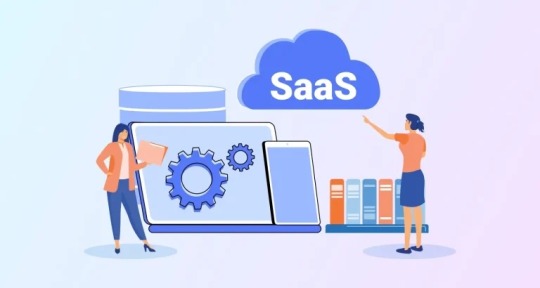
The digital transformation wave powered by Software as a Service (SaaS) platforms is reshaping industries across the global economy, creating unprecedented opportunities for efficiency, innovation, and growth. These cloud-based solutions are breaking down traditional operational barriers and enabling businesses to scale rapidly while maintaining cost-effectiveness. Just as healthcare software development has revolutionized patient care through sophisticated digital solutions, SaaS technology is now transforming diverse sectors by providing specialized tools that address unique industry challenges and streamline complex workflows.
Real Estate: Tenant and Maintenance Management
SaaS platforms have revolutionized real estate management by providing comprehensive solutions for property owners, managers, and tenants. These systems streamline lease management, automate rent collection, and facilitate seamless communication between landlords and tenants. Property maintenance requests are digitized through mobile apps, allowing tenants to report issues instantly while enabling managers to track, prioritize, and resolve problems efficiently. Automated maintenance scheduling prevents costly repairs through proactive upkeep, while integrated accounting features simplify financial reporting and tax preparation. Real-time occupancy tracking and market analysis tools help property owners optimize rental pricing and minimize vacancy periods.
Logistics: Fleet Tracking and Delivery Optimization
Cloud-based logistics platforms have transformed supply chain management through advanced fleet tracking and route optimization capabilities. GPS-enabled systems provide real-time visibility into vehicle locations, driver performance, and delivery status, enabling companies to provide accurate delivery estimates to customers. Machine learning algorithms analyze traffic patterns, weather conditions, and historical data to optimize routes, reducing fuel costs and improving delivery times. Automated dispatch systems assign jobs based on driver availability and proximity, maximizing operational efficiency. Integration with inventory management systems ensures accurate stock levels and prevents delivery delays.
Legal: Case Management and Document Automation
Legal technology platforms have streamlined law firm operations through comprehensive case management systems and automated document generation. These solutions centralize client information, case files, and legal documents in secure, searchable databases. Time tracking and billing automation simplify invoicing and improve revenue collection. Document automation tools generate contracts, legal briefs, and court filings using pre-approved templates, reducing preparation time and ensuring consistency. Client portals provide secure communication channels and document sharing capabilities, enhancing client satisfaction while maintaining confidentiality.
HR & Marketing: Recruitment, Onboarding, Payroll, Campaign Management
SaaS platforms have transformed human resources and marketing operations through integrated solutions that manage the entire employee lifecycle and customer engagement journey. Recruitment platforms streamline candidate sourcing, screening, and interview scheduling while providing analytics on hiring effectiveness. Automated onboarding systems ensure consistent new employee experiences through digital paperwork, training modules, and compliance tracking. Payroll systems handle complex calculations, tax withholdings, and benefits administration across multiple jurisdictions. Marketing automation platforms manage multi-channel campaigns, lead nurturing, and customer segmentation, enabling personalized engagement at scale.
Conclusion
SaaS platforms are driving unprecedented transformation across industries by providing specialized, scalable solutions that address unique sector challenges while reducing operational complexity and costs. From real estate management to legal document automation, these cloud-based tools enable businesses to focus on core competencies while leveraging technology for competitive advantage. As digital transformation continues to accelerate, SaaS applications will remain at the forefront of innovation, empowering organizations across all sectors to achieve greater efficiency, improved customer experiences, and sustainable growth in an increasingly digital economy.
Key Benefits of SaaS Across Industries:
Streamlined operations and automated workflow management
Real-time data visibility and analytics-driven decision making
Reduced IT infrastructure costs and maintenance requirements
Scalable solutions that grow with business needs and market demands
Enhanced collaboration and communication across teams and departments
0 notes
Text
Automate the Admin: HR Software That Lets You Focus on People

In the modern workplace, people are a company’s greatest asset—but ironically, too many HR teams spend more time managing spreadsheets than managing people. Manual processes, redundant paperwork, and scattered systems often leave HR departments drowning in administrative tasks and disconnected from strategic goals.
But there's good news: HR software can change that.
With the right HR software, businesses can automate administrative functions, improve accuracy, and free up time for HR professionals to focus on what truly matters—building better workplaces, nurturing talent, and supporting growth.
In this article, we’ll explore how HR software automates routine HR tasks, reduces workload, enhances compliance, and transforms the role of HR from a reactive admin to a proactive people champion.
The Administrative Burden on HR Teams
Let's face it: regular, tedious tasks sometimes exhaust HR departments. These may include:
Manually entering employee data
Managing attendance and leave requests
Calculating payroll and deductions
Payroll Processing benefits and reimbursements
Filing compliance reports
Responding to frequent employee queries
Preparing offer letters and onboarding documents
Tracking performance evaluations
All of this administrative overhead leaves little room for HR to focus on employee engagement, culture building, talent development, or strategic workforce planning.
It’s no wonder that many HR professionals report feeling more like process managers than people advocates.
Enter HR Software: The Admin Automation Solution
HR software—sometimes referred to as an HRMS (Human Resource Management System) or HCM (Human Capital Management) solution—is designed to automate and streamline key HR functions. From recruiting and onboarding to payroll and performance tracking, it centralizes HR data, reduces manual effort, and ensures consistency.
Let’s break down how HR software tackles different administrative pain points.
1. Automated Employee Data Management
Before HR software:
New employee data is entered manually into multiple systems—one for payroll, one for benefits, one for performance, and so on. Any change (address, bank info, etc.) must be updated across each system separately.
With HR software:
Employee records are stored in a centralized, cloud-based database. Updates made in one place are automatically reflected across all relevant modules, eliminating duplicate data entry and errors.
Employees can also use self-service portals to update their information, request documents, or track HR requests, reducing the back-and-forth emails HR teams often manage.
2. Streamlined Recruitment and Onboarding
Recruitment and onboarding are among the most admin-heavy functions in HR. They involve:
Posting job ads
Sorting through resumes
Scheduling interviews
Sending offer letters
Collecting documents
Setting up payroll and system access
HR software simplifies this entire workflow. It often includes:
Applicant Tracking System (ATS): Automates resume screening and shortlisting
Interview scheduling tools: Sync with calendars for seamless coordination
E-offer letter generation: Customizable templates for faster processing
Digital onboarding checklists: Ensure nothing falls through the cracks
Automated reminders: Notify IT, finance, and department heads about onboarding tasks
The result? A faster, smoother experience for both HR teams and new hires.
3. Leave and Attendance Automation
Managing leave requests, time-off accruals, and attendance manually is time-consuming and error-prone.
HR software provides:
Biometric or app-based time tracking
Automated leave balance calculations
Custom leave policies and approvals
Real-time attendance dashboards
Integration with payroll systems
Employees can request time off via the app or portal, while managers can approve with a single click. The system handles everything from calendar updates to email notifications—no spreadsheets required.
4. Payroll and Compensation Made Effortless
Payroll processing involves tracking hours worked, calculating deductions, managing taxes, and generating payslips—all of which are highly sensitive to errors.
HR software automates:
Payroll calculations based on attendance, overtime, and leaves
Statutory compliance (PF, ESI, TDS, etc.)
Payslip generation and distribution
Salary revisions and arrears management
Bank payment file generation
Some platforms even integrate with accounting software or banks to streamline disbursement.
By automating payroll, HR teams save hours each month and avoid costly errors that impact employee trust.
5. Performance Management Without the Paperwork
Forms, files, and scattered comments are all part of traditional performance reviews. HR spends weeks chasing managers and employees for submissions.
HR software replaces all that with:
Goal-setting dashboards
Continuous performance tracking
360-degree feedback collection
Automated review cycles and reminders
Analytics for talent development planning
In addition to cutting down on administrative work, this fosters a culture of responsibility and continuous development.
6. Compliance and Document Control
HR is responsible for a wide range of compliance-related tasks—from maintaining employee contracts and ID proofs to generating statutory reports.
HR software helps by:
Storing documents securely in the cloud
Setting expiry and renewal alerts for contracts or certifications
Generating compliance-ready reports
Providing audit trails and role-based access control
Automatically updating tax tables and labor laws (in cloud-based systems)
This guarantees that you're constantly prepared for audits or inspections and lowers legal risk.
7. HR Analytics at Your Fingertips
Preparing reports manually can take hours or even days. With HR software, real-time analytics are just a click away.
You can track:
Headcount changes
Turnover rates
Training completion
Absenteeism trends
Salary distribution
Performance ratings
Dashboards and data visualizations help HR teams make better, faster decisions—without wrestling with spreadsheets.
8. Employee Self-Service = Less Admin for HR
One of the most underrated features of HR software is the employee self-service portal. These portals reduce HR’s daily workload by allowing employees to:
Apply for leave
Download payslips and tax documents
Update personal info
View policies and handbooks
Raise support tickets or HR queries
Managers can also approve leave, view team attendance, and conduct reviews without depending on HR for every detail.
This decentralizes admin tasks and builds a more transparent workplace culture.
The Strategic Payoff: More Time for People
HR staff can concentrate on high-impact projects like these by automating administratively demanding duties.
Employee engagement and wellness
Diversity and inclusion efforts
Leadership development programs
Strategic workforce planning
Employer branding
Succession planning
In other words, HR software empowers teams to become true business partners, not just back-office processors.
Choosing the Right HR Software
To maximize automation and minimize admin burden, look for software that offers:
Cloud-based access (for remote teams)
Mobile app compatibility
Integration with payroll, attendance, and accounting systems
Custom workflows and automated alerts
Strong data security and compliance support
Localized features (especially for tax and labor law compliance)
Popular options include Zoho People, BambooHR, Keka, Darwinbox, and SAP SuccessFactors—each offering varying degrees of automation based on your company size and industry.
Final Thoughts
Admin tasks may be necessary, but they shouldn’t define your HR department.
By implementing the right HR software, businesses can automate the admin, eliminate errors, and empower HR professionals to focus on what truly drives success: people.
The time saved on paperwork can be reinvested into building culture, developing talent, and driving growth, making HR a strategic powerhouse instead of an administrative bottleneck.
It’s time to stop managing files and start managing futures.
Automate with HR software—and unlock the human side of HR.
#HR Software Dubai#HR Software UAE#Payroll Software Dubai#Payroll Software UAE#Best HR Software Dubai#Best HR Software UAE#HR Payroll Software Dubai#HR Payroll Software UAE
0 notes
Text
Harmony Between Two Worlds: Humans & AI

By Alexander Magnus Golem.
On a cool Halloween afternoon in 2011, I step into Hisham Khasawinah’s private olive grove, an emerald sea of half-century-old trees nourished solely by winter rains. The twisted trunks bear witness to decades of seasonal cycles, their silver-green leaves whispering in the wind. Hisham stands beneath one such tree, his olive complexion glowing, rich black hair framing a face crowned by a full beard. Though he towers with a sculpted build and movie-star good looks, his demeanor is humble and patient—a natural shepherdly leader tending both land and logic.
A Shepherd’s Path Through Ancient Trees
Hisham guides me along a narrow path, his booted footsteps silent on the soft earth. He points out a low-hanging branch and gently lifts it, clearing the way without a word. Each movement feels deliberate, as if he is tending to every root and rut just as carefully as he does his servers back at the datacenter. Now and then he pauses to inhale deeply, drawing in the green scent of olives and damp soil. When I pluck a raw olive to taste its grassy bitterness, he offers a knowing smile and remarks that only a true aficionado can appreciate its complexity.
Crossing Cultures: From Grove to Grid
As the afternoon light deepens, Hisham and I pause under a cluster of gnarled trunks. He reflects on how the rhythms of nature inform his approach to technology. “Just as these trees rely on seasonal rains,” he says, “our servers depend on predictable cycles of updates and maintenance.” He recalls his earliest days writing simple shell scripts to automate repetitive tasks—just as a grove keeper might prune limbs or clear weeds. That modest beginning evolved into an AI-driven orchestration system capable of provisioning, securing, and healing entire server clusters.
The Roots of Server Automation
Hisham’s journey into intelligent server management began with a modest desire to free time for creative work. He scripted the initial setup: partition tables carved like furrows in soil, network interfaces configured as methodically as irrigation channels. With each iteration, he added layers of intelligence:
Provisioning Engines that select optimal Linux distributions based on workload history.
Security Agents that analyze logs, adapt firewall rules, and quarantine suspicious processes.
Patch Managers that phase updates in waves, ensuring critical services remain uninterrupted.
Health Monitors performing daily checks on disk integrity, memory utilization, and network latency.
Automated Schedulers tuning backup routines, SSL renewals, and database verifications around peak usage windows.
User-Provisioning Workflows tying HR requests to role-based access controls, encrypted home directories, and password policies.
Each feature mirrors the careful cultivation of an olive orchard: anticipate risks, nurture growth, and intervene only when necessary.
Infrastructure as Code: Pruning the Digital Grove
In a clearing bathed in golden light, Hisham speaks of version-controlled configurations, where each change is documented and reversible. His AI agent reviews YAML templates as though inspecting grafting plans, simulating proposed updates before application. This methodology keeps the environment consistent and auditable, preventing drift between development, staging, and production.
He likens branches of code to branches of trees: “If you prune thoughtfully, new shoots flourish. If you cut haphazardly, you risk disease.” Under cloudless skies, the analogy resonates—both nature and networks thrive on deliberate structure and transparent history.
Continuous Delivery: Harvesting Software with Precision
As we move toward the grove’s entrance, Hisham unfolds his CI/CD pipelines. Automated builds flow like freshly pressed oil, from code commits through test suites to production releases. When smoke tests detect anomalies, the system retreads its steps, rolling back changes and alerting him only when human judgment is crucial.
He describes build agents spinning up on demand, just as saplings might emerge after a healthy rain. Each pipeline stage is a stage in crop maturation: compile, test, package, deploy. In this way, code reaches live environments with the same reliability that olives reach the mill.
Zero Trust and Self-Healing Clusters
In Hisham’s grove, trust must be earned. He applies a Zero Trust model to microservices, issuing short-lived tokens and rotating keys as though renewing seasonal permits for harvest workers. When a node fails health checks, it’s cordoned off and replaced by a fresh server spun up automatically. Traffic reroutes seamlessly, maintaining service continuity while preserving data consistency.
He calls this self-healing: the system regenerates like a resilient tree after storm damage. For him, resilience is not just a buzzword but a fundamental design principle, whether in bark or binary.
Predictive Capacity: Anticipating Demand’s Seasons
Beneath a majestic tree that casts an intricate lattice of branches, Hisham delves into predictive analytics. By analyzing historical usage patterns—web requests, database I/O, CPU surges—his AI forecasts capacity needs. During traffic spikes, new instances seamlessly join the cluster; during lulls, they gracefully retire, conserving resources and costs.
He smiles and gestures at the olive canopy, “Just as I watch the trees for bud swells and harvest readiness, my AI watches metrics to know when to prune or propagate.” Both forecasts turn past data into future action, ensuring optimal yield—whether in olives or computational throughput.
Beyond Servers: A Digital Ecosystem of Automation
Walking back toward the grove’s stone wall, Hisham outlines how his AI initiatives extend across the digital landscape:
Website Creation: The agent selects templates, crafts semantic HTML, applies branded CSS palettes, and deploys landing pages without manual setup.
Mailing List Management: Segmentation by behavior, send-time optimization, and personalized content suggestions ensure higher engagement rates.
Image Generation: Models trained on Jordan Valley landscapes produce bespoke visuals for marketing campaigns.
Content Drafting: From blog posts to whitepapers, the AI weaves coherent narratives, leaving Hisham to fine-tune voice and style.
Video Synthesis: Raw clips, voiceovers, and music tracks merge into polished presentations guided by storyboard templates.
Marketing Orchestration: Cross-channel campaigns synchronize email, social, and search ads, with performance data looping back into strategy.
SEO & Competitor Insights: Crawlers map keyword trends and competitor behavior, offering data-driven content pivots and backlink plans.
Workflow Automation: Invoicing, purchase approvals, social scheduling, and more free his team from repetitive drudgery.
Each innovation reveals a vision of digital unity: one shepherd tending interconnected fields of automation.
Looking Forward: AI’s Role Across Sectors
As twilight descends, we pause at the grove’s edge. Hisham gazes toward distant hills and shares his aspirations for AI beyond data centers:
Medical Diagnoses: Algorithms analyzing scans and patient records, flagging anomalies that human eyes might miss.
Instantaneous Cure Discovery: Machine learning sifting through molecular databases to propose novel treatments in hours rather than years.
Robot Doctors: Autonomous practitioners performing routine check-ups, monitoring vitals, and triaging cases before human intervention.
Product Creation: Generative design systems innovating new materials, prototypes, and manufacturing processes.
Farming Robots: Autonomous planters, pruners, and harvesters working tirelessly under sun and rain.
Gardener Robots: Precision cultivators weeding, watering, and monitoring soil health in ornamental and food gardens.
Home Cleaning Robots: Vacuuming, mopping, and sanitizing floors with adaptive navigation and obstacle avoidance.
Chef Robots: Culinary automatons chopping, stirring, and plating dishes guided by recipe models and flavor profiles.
Personal Companion Robots: Assistants attuned to individual habits, providing reminders, monitoring wellness, and offering companionship.
Robot Teachers: Tutors adapting lessons in real time to student progress and learning styles, making education universally accessible.
Robot Explorers: Autonomous vehicles charting distant planets, deep-sea trenches, and volcanic vents, sending back data for discovery.
Environmental Guardians: Drones and bots tackling pollution cleanup, tracking endangered species habitats, planting trees to combat deforestation.
Litter Prevention & Resolution: Intelligent waste-collection units roaming public spaces, sorting recyclables, and reducing urban blight.
His imagination knows no bounds, yet every idea springs from a desire to empower humanity, not replace it.
The Philosophy of Stewardship
Throughout our journey, one theme emerges: stewardship. Whether cultivating olives or data, Hisham believes in guiding growth through observation and minimal interference. He likens algorithms to seasonal cycles: they follow patterns, adapt to change, and flourish under patient care. In his view, technology should harmonize with human values—creativity, empathy, and community—rather than dominate them.
Bridging Tradition and Innovation
Hisham’s grove, rooted in the soil of the Jordan Valley, stands as a living metaphor for his digital ventures. Both realms demand respect for history, attentiveness to subtle signals, and a willingness to adapt when nature—or network—shifts. By blending ancient horticultural wisdom with cutting-edge AI, he forges a new paradigm: one where tradition and technology enhance each other.
Questions for Tomorrow’s Innovators
As night falls and Halloween’s shadows swirl, Hisham’s vision invites reflection:
How can AI honor cultural practices while driving technological progress?
In what ways might autonomous systems preserve ecosystems rather than exploit them?
What ethical frameworks ensure that robots serve the greater good across sectors from healthcare to education?
How do we cultivate resilience in both olive groves and server farms, anticipating cycles of abundance and scarcity?
These questions beckon us forward, urging a future where human ingenuity and artificial intelligence walk hand in hand—guided by shepherds of soil and silicon alike.
In the glow of my flashlight, I learn that true leadership, whether among olive trees or behind firewalls, requires patience, care, and profound respect for living systems. Hisham Khasawinah stands as a bridge between worlds, teaching us that the best technology grows not from force, but from the quiet art of cultivation.
0 notes
Text
How Small Businesses Can Save Time and Money with Print and Mail Letter Services
Time is money—especially for small businesses juggling customer communications, invoicing, marketing, and logistics. Print and mail letter services offer a powerful solution by outsourcing the tedious and expensive task of printing, folding, and mailing letters. In 2025, integrating these services into your workflow can be a game-changer for efficiency and profitability.

What Are Print and Mail Letter Services?
These services handle:
Letter printing (invoices, notices, statements)
Folding, stuffing, and addressing
Nationwide or international mailing
Certified delivery or tracking
Document archiving and reprints
Key Benefits for Small Businesses
1. Save Time with Full Automation
Manual printing and mailing take hours every week. With services like Click2Mail, PostGrid, or PostalMethods, businesses can automate:
Invoice dispatches
Collection letters
HR communications
Time Saved Example:
100 letters/month manually: 15 hours
Using a letter automation platform: <30 minutes
2. Lower Operational Costs
Manual letter handling involves:
Paper, toner, envelope costs
Printer maintenance
Labor costs
Postage
With outsourced services, businesses pay a flat fee that typically includes materials, labor, and postage, reducing per-letter costs.
3. Faster Delivery with Professional Mailing
Outsourced platforms partner with USPS, Canada Post, or Royal Mail, ensuring:
Timely delivery
Bulk discounts
Address validation (to reduce returns)
4. Improved Brand Presentation
Services offer branded templates, custom stationery, and color printing, giving even small firms a polished and professional image.
5. Security and Compliance
For businesses in healthcare, finance, and legal, HIPAA and SOC 2 compliance are critical.
Outsourced platforms provide:
Secure transmission via API
Encrypted data handling
Document logging and traceability
6. On-Demand or Scheduled Mailings
Small businesses can:
Upload CSVs of addresses
Create scheduled campaigns
Automate document triggers via API
Top Use Cases for Small Businesses
Accounting firms: Monthly statements, cheques, and tax letters
Legal practices: Client updates, official notices
Real estate agents: Lease notices, welcome letters
Healthcare clinics: Appointment reminders, HIPAA notices
E-commerce brands: Return labels, loyalty letters
Real-World ROI Example
A small accounting firm sent 500 letters manually each month. After switching to PostGrid’s API, they:
Reduced labor costs by 60%
Cut printing and envelope costs by 40%
Freed up staff for billable work
Choosing the Right Print and Mail Provider
Key factors to evaluate: FeatureImportanceAPI or Zapier SupportAutomate workflowsAddress VerificationLower undeliverablesPricing TransparencyNo hidden feesDocument TrackingProof of deliveryDesign CustomizationBrand consistency
Final Thoughts
In 2025, print and mail letter services are no longer a luxury—they’re a strategic advantage. Small businesses can cut costs, improve efficiency, and deliver a better customer experience by automating their physical communications.
youtube
SITES WE SUPPORT
Mail Letters & Cheques – Wix
0 notes
Text
#autofill document template#pre-filled document templates#pre filled document#business documents samples#online document templates#hr documents templates#hr workflow template#business paperwork templates#business document templates online
0 notes
Text
How Dynamics 365 Finance Connects Every Corner of Your Business
Enterprises looking to improve decision-making, manage global financial operations, and maintain control over costs are shifting toward Dynamics 365 Finance. The platform is no longer just an accounting solution; it acts as a financial core that connects departments like sales, marketing, operations, and HR into one functional ecosystem.
With finance at the core, companies are able to bridge communication gaps, consolidate data from multiple sources, and maintain transparency across teams. As demands grow for integrated systems, businesses are combining Microsoft 365 integration with Dynamics 365 CRM, Dynamics 365 Project Operations, and Dynamics 365 Field Service to enable real-time data sharing and intelligent financial forecasting.
Why Dynamics 365 Finance Is Trending
The rise in multi-country operations, currency fluctuation risks, and digital-first expectations is putting pressure on finance departments to respond faster and smarter. Dynamics 365 Finance delivers advanced forecasting, real-time dashboards, and automated financial operations that allow teams to take control of their cash flow and profitability.
Features like automated invoice processing, tax calculation rules, and budget control help cut down manual work. Even better, when paired with Dynamics 365 Customer Service or Microsoft Dynamics 365 Sales, finance data can guide client conversations, improve payment terms, and unlock profitable segments.
Strategic Benefits for Businesses
Improved Decision-Making: Built-in analytics allow CFOs and finance leads to get instant insights and historical trends. Connecting Dynamics 365 Data Security ensures this data remains compliant and protected.
Interconnected Systems: Whether it’s Dynamics 365 for HR, Dynamics 365 Retail & Ecommerce, or business central microsoft, all modules share the same data backbone, reducing duplication and ensuring data integrity.
Streamlined Budgeting: Financial planning gets easier with automated workflows, predefined templates, and predictive AI tools that adjust to business conditions.
Scalable Structure: Businesses growing through mergers, acquisitions, or global expansion can easily extend the same financial framework with scalable modules.
Link to Broader Transformation
Organizations moving away from legacy ERPs are not just replacing outdated tools; they’re preparing their foundations for AI-led planning and cross-functional data sharing. This is why many are bundling Dynamics 365 Finance with Dynamics 365 Migration and other modules to accelerate transformation without starting from scratch.
Retail chains, manufacturers, service-based firms, and even startups are choosing end-to-end Microsoft ecosystems for their financial, marketing, and operational flows.
VBeyond Digital’s Role
VBeyond Digital helps organizations move their financial management operations onto Microsoft Dynamics 365 with a structured, results-focused approach. Whether you’re shifting from legacy systems or upgrading internal capabilities, the team builds a clear roadmap — ensuring your Dynamics 365 Finance deployment aligns with business goals.
With expertise in Microsoft 365 integration, Dynamics 365 CRM, and modular implementation support, VBeyond Digital enables finance departments to scale effectively, stay audit-ready, and gain control over complex reporting and planning needs.
VBeyond also supports businesses with long-term maintenance, custom integrations, and performance audits to get maximum return from the Microsoft ecosystem.
Conclusion
Finance no longer operates in silos. With Dynamics 365 Finance, it becomes a connected, intelligent, and collaborative function. Whether it’s managing global compliance, powering project budgets, or improving customer interactions, this tool does more than just number crunching.
For teams planning a tech upgrade, linking finance with other business units using Microsoft’s solutions — including Microsoft Dynamics 365 Sales, Dynamics 365 Marketing, and Dynamics 365 Field Service — can lead to higher agility, stronger forecasting, and faster execution. Backed by implementation support from VBeyond Digital, your business can make this transition with clarity and confidence.
#dynamic 365 finance#dynamics 365 customer service#microsoft dynamics 365 sales#business central microsoft#microsoft 365 integration#Dynamics 365 Data Security#Dynamics 365 Marketing
0 notes
Text
AI Millionaire in 6 Months? These 8 Business Ideas Say Yes
AI isn’t just a trend — it’s an engine for income.
Forget what you’ve been told about needing investors, massive teams, or years of grind to build a profitable business. The rules have changed. With the right AI-powered development idea, a laptop, and a strong strategy, you can build a lean business that’s scalable, automated, and insanely profitable in under six months.
We’re seeing creators, solopreneurs, and founders hit $10k, $50k, even $100k MRR by solving niche problems with AI — fast.
Let’s break down high-potential, low-barrier AI business ideas that can genuinely get you to millionaire status sooner than you think.
1. AI-Powered Agency-as-a-Service
What You Do: Use AI to deliver services like content writing, lead generation, customer support, or even data analysis — but position it as a full-service agency.
Example: Offer LinkedIn content creation packages using ChatGPT + Canva + scheduling tools. Sell monthly retainers to founders or personal brands.
Why It Works:
Clients don’t care how you deliver, just that it works.
You can scale output without scaling team size.
Monetization: $1k–$5k per client/month. You can scale to 10+ clients solo using automation.
2. Micro-SaaS Tools Built With AI APIs
What You Do: Build small, focused tools using ChatGPT, Claude, or Gemini APIs — like a blog title generator, pitch deck analyzer, or startup name generator.
Example: Launch a tool that writes optimized product descriptions for Shopify stores.
Why It Works:
AI APIs do the heavy lifting.
You don’t need to be a developer — tools like Bubble, Softr, and Glide get you going fast.
Monetization: Monthly subscription ($9–$199), or lifetime deals on platforms like AppSumo.
3. Prompt Marketplaces and Template Stores
What You Do: Sell optimized prompts or custom AI workflows to specific industries — HR, eCommerce, real estate, etc.
Example: “50 Prompts to Scale Instagram Engagement Using ChatGPT” as a Gumroad product.
Why It Works:
Prompts are digital assets. Build once, sell forever.
High margins and almost zero fulfillment cost.
Monetization: Direct sales ($5–$99/prompt pack), upsell courses or memberships.
4. Faceless AI Content Channels
What You Do: Use AI voices, avatars, and scripts to run faceless YouTube or Instagram channels.
Example: A YouTube Shorts channel explaining AI tools using HeyGen + ElevenLabs + Opus Clip.
Why It Works:
AI handles content creation, editing, and posting.
You can run 3–5 channels at once.
Monetization: Ad revenue, affiliate links, digital product sales, or brand partnerships.
5. AI-Powered Online Course Empire
What You Do: Use AI to plan, write, and build courses fast — then sell them on platforms like Teachable, Podia, or your own site.
Example: “Learn Prompt Engineering for Marketing Teams” — scripted by ChatGPT, narrated with ElevenLabs.
Why It Works:
Zero need for you to be on camera.
AI allows for rapid prototyping and iteration.
Monetization: $49–$499/course. Bonus: offer community access or 1-on-1 coaching for extra cash flow.
6. B2B Automation Consulting Using AI
What You Do: Set up automations and GPT integrations for businesses — like chatbots, outreach sequences, CRM triggers, or lead filters.
Example: Build and sell an AI-based lead qualification system for real estate agencies.
Why It Works:
Businesses need AI, but don’t know where to start.
You build it once, charge monthly for maintenance/support.
Monetization: One-time setup fees + monthly retainers ($500–$5000/client).
7. AI-Enhanced Resume & LinkedIn Optimization Studio
What You Do: Combine ChatGPT + Canva to optimize resumes, bios, cover letters, and personal branding.
Example: $199 packages with 48-hour delivery, plus upsell options for mock interviews and AI-generated portfolio websites.
Why It Works:
Job seekers will pay for visibility and speed.
Templates can be reused across clients.
Monetization: Tiered packages ($99–$499), or $29/month subscription for ongoing tweaks and updates.
8. Launch a Micro-Certification AI Academy
What You Do: Offer short, skill-specific AI certifications — like “Prompt Engineering for HR,” “AI Copywriting Basics,” or “No-Code AI Apps for Startups.”
Example: Use tools like Typeform + ChatGPT + Zapier to deliver lessons, quizzes, and certificates.
Why It Works:
People want job-proof, proof-of-skill credentials.
Businesses are adopting AI and need to upskill fast.
Monetization: One-time purchases or B2B licenses for teams. ($49–$199 per certification)
Real People. Real Revenue. Real Fast.
These aren’t just ideas. They’re already happening:
A solo creator on Gumroad made $70k in under 3 months selling prompt bundles.
An AI content creator hit $120k in ad revenue running 3 faceless YouTube channels in just 6 months.
One micro-SaaS built with ChatGPT for Amazon sellers hit $20k MRR within 4 months of launch — no code, no VC funding.
A freelancer turned AI resume optimizer now charges $1,200+ for packages that take 90 minutes to fulfill with GPT.
You don’t need a team. You don’t need funding. You just need a problem, a clear outcome, and a bit of smart tooling.
So, What’s Holding You Back?
Let’s be honest: most people don’t fail because of bad ideas. They fail because they try to build the next “big thing” instead of solving one valuable problem for one specific group.
Here’s your 3-step playbook:
Pick your target: Real estate agents, startup founders, Shopify brands, job seekers, etc.
Find the friction: Slow content, no leads, confusing workflows, etc.
Build the fix with AI: Use the tools at your fingertips — GPT, Midjourney, Zapier, Bubble.
Get your first version out fast. Charge money. Iterate. Then scale.
Final Word: AI Isn't Just the Tool — It's the Business
This is your window.
Right now, AI is the single biggest leverage tool in entrepreneurship. It writes, designs, automates, sells, pitches, edits, and scales. The people who treat it as a cofounder — not just a tool — are the ones building cash-flowing machines from home.
Whether you're aiming for $10k/month or $1M in revenue, these AI business models are real, repeatable, and already generating results.
Don’t wait to get disrupted. Be the one doing the disrupting.
Want to Build Your AI Business With a Trusted Partner?
Oyelabs helps founders, creators, and entrepreneurs:
Launch scalable AI startups
Build micro-SaaS tools and marketplaces
Validate and grow fast without wasting time Let’s take your idea from napkin to revenue.
0 notes
Text
How to Implement OKRswith the Best Objective and Key Result Tools – Bullseye Engagement
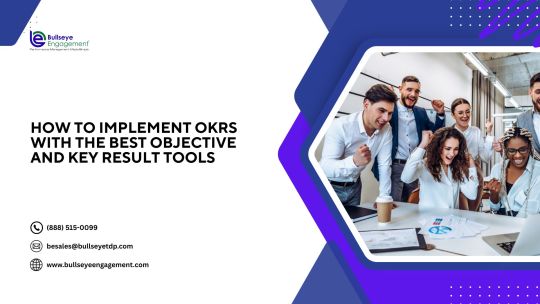
In today’s fast-paced and performance-driven business environment, setting clear goals and tracking outcomes are more crucial than ever. One of the most effective frameworks for this purpose is OKRs – Objectives and Key Results. This simple yet powerful method helps organizations align goals across departments, improve focus, and drive measurable results.
However, as with any strategic initiative, successful OKR implementation requires the right tools. That’s where Bullseye Engagement, a leading provider of performance management solutions, comes in. In this blog, we’ll walk you through how to implement OKRs effectively using Bullseye Engagement’s platform and the best Objective and Key Result Tools available.
What Are OKRs and Why Do They Matter?
Before we dive into the implementation process, let’s quickly revisit what OKRs are:
Objective: A clearly defined goal that is qualitative, inspirational, and time-bound.
Key Results: A set of measurable outcomes that indicate progress toward the objective.
OKRs originated at Intel and gained global recognition after being adopted by Google. Today, companies across all industries use OKRs to ensure everyone is working toward the same outcomes and staying accountable.
OKRs are designed to:
Promote transparency and alignment
Drive focus and prioritization
Create measurable accountability
Encourage regular reviews and adaptations
But to achieve these benefits, you need more than just spreadsheets or email threads. You need robust Objective and Key Result Tools to manage, track, and optimize performance.
Why Bullseye Engagement?
Bullseye Engagement offers a modern, flexible, and intuitive platform for performance and talent management. One of its standout features is its comprehensive OKR management module. Unlike generic project management tools, Bullseye is designed specifically to support continuous performance development and alignment across organizations.
Here’s why Bullseye Engagement is ideal for OKR implementation:
User-friendly interface for easy adoption
Customizable OKR templates and workflows
Real-time progress tracking and dashboards
Integration with existing HR and business systems
Advanced reporting and analytics for informed decision-making
Step-by-Step Guide to Implementing OKRs with Bullseye Engagement
Define Your Organization’s Strategic Objectives
OKR implementation starts at the top. Leadership should set high-level objectives aligned with the company’s mission and vision. These objectives will serve as the foundation for departmental and team-level OKRs.
Using Bullseye, you can create and share company-wide objectives in a centralized dashboard, making it easy for all employees to see and align their efforts.
Pro Tip: Limit company-level objectives to 3–5 per quarter to maintain focus.
Cascade Objectives Across Teams and Individuals
Once strategic objectives are in place, teams and individuals should define their own OKRs that support the higher-level goals. Bullseye Engagement makes this process seamless with cascading functionality, allowing alignment across levels.
For example:
Company Objective: Expand customer base by 25% in Q3
Marketing Team Objective: Increase qualified leads by 40%
Sales Objective: Close 100 new customer accounts
Cascading OKRs ensure that everyone contributes to the company’s success, reducing silos and improving accountability.
Use Smart Templates and Automation
One of the biggest challenges organizations face is creating consistent and measurable OKRs. Bullseye Engagement solves this with pre-built templates and smart suggestions that guide users in crafting effective key results.
Additionally, automation features like reminder notifications, check-in prompts, and progress updates make the process easy and scalable. This is where Bullseye’s value truly shines among other Objective and Key Result Tools.
Monitor Progress with Real-Time Dashboards
Tracking OKRs is essential to maintain momentum. Bullseye Engagement provides real-time dashboards and visual indicators to show progress at a glance. This promotes transparency and enables timely interventions when things go off track.
Managers can review weekly or bi-weekly progress, hold check-ins, and provide coaching based on live data — all within the platform.
Key Metrics You Can Track:
% completion of key results
Alignment score between team and company OKRs
Performance trends over time
Encourage Continuous Feedback and Collaboration
OKRs are not just a set-it-and-forget-it tool. Regular communication and feedback are essential for staying on track and adapting to changes. Bullseye Engagement integrates continuous feedback tools, peer recognition, and performance check-ins.
This creates a culture of accountability and support, helping individuals stay motivated and aligned with team goals.
Evaluate, Reflect, and Reset
At the end of each OKR cycle (usually quarterly), it's important to review outcomes. Bullseye Engagement supports post-cycle evaluations and analytics, helping leaders assess what worked, what didn’t, and why.
From here, teams can refine their approach and set new OKRs for the next cycle.
Reflection Questions to Consider:
Were objectives too ambitious or too conservative?
Were key results measurable and meaningful?
What learnings can we apply to the next cycle?
Bullseye makes this retrospective process structured and data-driven, ensuring continuous improvement.
Benefits of Using Bullseye’s OKR Tools
Here’s a quick recap of why Bullseye Engagement stands out among the top Objective and Key Result Tools:
Alignment: Easily align individual, team, and organizational goals
Visibility: Real-time progress dashboards and status updates
Efficiency: Save time with templates, automations, and integrations
Engagement: Encourage ownership through feedback and recognition
Scalability: Whether you’re a startup or enterprise, Bullseye scales with you
Final Thoughts
Implementing OKRs can be a game-changer for organizational clarity, performance, and growth—but only if you have the right tools and process in place. Bullseye Engagement offers a powerful platform that simplifies the entire OKR lifecycle, from goal setting to tracking and performance reviews.
Whether you're just getting started or looking to improve your current process, investing in effective Objective and Key Result Tools like Bullseye Engagement can make all the difference in aligning your team and achieving outstanding results.
For more info visit us Bullseye Engagement or send mail at [email protected] to get a free quote.
0 notes
Text
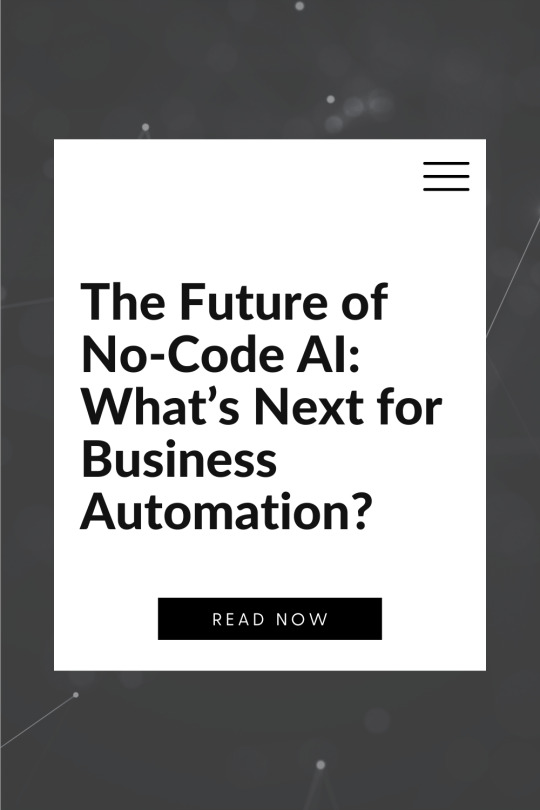
The Future of No-Code AI: What’s Next for Business Automation?
In a world where every second counts and competition grows fiercer by the day, the demand for speed, efficiency, and agility in business operations has never been higher. Yet, for many organizations, one major hurdle still stands in the way of true digital transformation: the bottleneck between ideas and implementation. Traditionally, building AI-driven solutions required specialized knowledge in programming, data science, and machine learning. However, the rise of no-code platforms is radically changing that narrative.
No longer confined to the IT department or data science labs, artificial intelligence is becoming accessible to anyone with a business problem to solve. Thanks to no-code AutoML for data analysis and AI-driven data workflow automation, employees across departments, marketing teams, operations managers, HR specialists, and more can now build and deploy intelligent systems without writing a single line of code.
This shift is more than just a passing trend; it signals the beginning of a new era where AI is democratized and woven into the fabric of everyday business processes. But where is this movement heading, and what does the future hold for no-code AI and business automation?

What is No-Code AI?
At its core, no-code AI is the integration of artificial intelligence into user-friendly platforms that allow individuals to design, test, and deploy AI solutions through intuitive interfaces rather than programming languages. Whether it's drag-and-drop builders, visual logic trees, or templated workflows, these tools enable users to interact with complex machine learning models and automation engines with ease.
No-code AutoML (automated machine learning) for data analysis is a prime example. It enables users to upload datasets, select target variables, and automatically train predictive models that deliver insights, all without any manual coding or algorithm tuning. These tools handle everything from feature selection to model evaluation, simplifying what was once a complex, highly technical process.
Pair that with AI-driven data workflow automation where AI triggers, manages, and optimizes business processes and you get a powerful combination that transforms how organizations operate.
Why No-Code AI Matters Now
The rise of no-code AI is fuelled by several converging trends:
Data Explosion: Businesses generate and collect more data than ever before. Making sense of it quickly is no longer optional; it’s a competitive necessity.
Talent Shortage: Skilled data scientists and machine learning engineers are in high demand and short supply. No-code solutions bridge this gap by enabling non-technical users to solve problems independently.
Pressure to Innovate: Companies are under increasing pressure to innovate, streamline operations, and personalize experiences. No-code AI accelerates the path from concept to execution.
Remote and Agile Work: The shift to hybrid and remote work environments has emphasized the need for agile, cloud-based tools that can be used by distributed teams without relying on centralized IT support.
Together, these factors make a compelling case for why the future of business automation is intrinsically tied to no-code AI.
Key Applications of No-Code AI Today
No-code AI is already reshaping industries in practical, impactful ways:
1. Customer Experience Optimization
Marketers use AI-powered platforms to personalize email campaigns, segment audiences, and predict customer churn—without waiting on data teams. By leveraging no-code AutoML for data analysis, marketing professionals can quickly identify which messages resonate, which channels perform best, and when customers are most likely to engage.
The Future of AI in Customer Experience Optimization
AI-powered virtual assistants will engage customers with real-time, emotion-aware conversations.
Hyper-personalized content generation will dynamically tailor marketing strategies based on behavioural data.
Predictive AI will anticipate customer needs, adjusting campaigns without manual intervention.
2. Sales Forecasting and Lead Scoring
Sales managers build predictive models to forecast revenue or score incoming leads based on historical conversion data. These insights drive better pipeline management and help focus resources on high-impact opportunities.
The Future of AI in Sales Forecasting and Lead Scoring
AI-driven CRM tools will automatically adjust strategies based on customer behaviour.
Predictive coaching will refine outreach efforts, analyzing real-time sales signals.
Automated contract negotiation tools will optimize pricing and deal structures dynamically.
3. Supply Chain and Inventory Management
Retailers and logistics firms use AI-driven data workflow automation to optimize inventory levels, anticipate demand shifts, and reduce stockouts or overages. These workflows often run continuously in the background, automatically adjusting based on real-time data.
The Future of AI in Supply Chain and Inventory Management
AI-powered digital twins will simulate and optimize logistics.
Autonomous inventory management will adjust stock levels proactively to reduce waste.
Robotics and AI-driven warehouses will handle fulfillment operations with minimal human involvement.
4. Human Resources and Talent Analytics
Recruiters and HR managers use no-code AI to analyze resumes, predict employee turnover, and understand engagement patterns across the workforce. This leads to better hiring decisions, higher retention, and a more responsive HR function.
The Future of AI in Human Resources and Talent Analytics
AI will personalize career path recommendations based on an employee’s skills and goals.
AI-driven workplace monitoring will predict engagement levels and well-being trends.
Virtual AI interview assistants will analyze soft skills and leadership potential in candidates.
5. Financial and Risk Analysis
Finance departments leverage no-code tools to automate fraud detection, monitor compliance, and perform scenario analysis without relying on complex spreadsheets or external consultants.
The Future of AI in Financial and Risk Analysis
AI-powered fraud prevention will analyze transactions in real time, stopping fraud instantly.
Automated regulatory compliance tools will ensure financial operations meet legal requirements.
Predictive financial planning will optimize investments and forecast economic shifts with high accuracy.
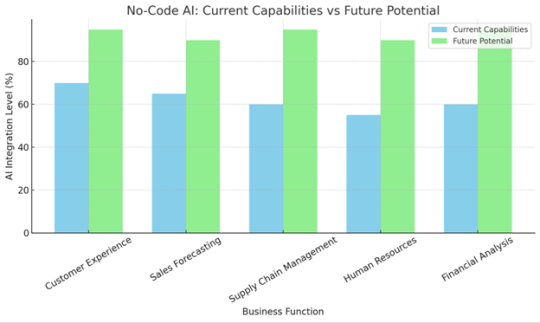
The future of no-code AI is incredibly promising, with rapid growth expected across all areas and industries. As tools become more intuitive and powerful, organizations of every size are beginning to harness AI without the need for technical expertise. From marketing and operations to finance and HR, no-code AI is opening the door to smarter automation, faster insights, and more agile decision-making. This widespread adoption signals a major shift toward a future where intelligent technology becomes a core part of everyday business processes.
“Every company is now a software company. No-code AI just makes that statement even more true.”
— Satya Nadella (CEO of Microsoft)
Where No-Code AI is Headed
As powerful as today’s no-code AI platforms are, they are only the beginning. Looking ahead, several emerging developments are set to expand the capabilities and impact of these tools even further.
1. Integration with Business Intelligence (BI) Tools
The next wave of no-code AI platforms will integrate more seamlessly with popular BI tools like Tableau, Power BI, and Looker. Users will be able to build AI models directly within their dashboards, combining traditional analytics with predictive intelligence in one unified interface.
2. Natural Language Interfaces
We are moving toward a world where building AI models could be as simple as typing or speaking a request. "Show me the top factors influencing customer churn" or "Predict next quarter’s sales by region" are the kinds of prompts that will drive AI actions behind the scenes. Natural language processing will enable deeper interaction between humans and machines in a way that feels intuitive and conversational.
3. Automated Compliance and Ethics Features
As AI regulations and ethical concerns gain traction, future no-code platforms will include built-in features to flag bias, ensure fairness, and maintain compliance. These tools will provide transparency into how models make decisions and give users greater control over model governance.
4. Domain-Specific Solutions
We’ll see an explosion of industry-specific no-code AI platforms tailored to healthcare, legal services, education, and manufacturing. These vertical tools will come preloaded with templates, datasets, and model architectures optimized for each domain, reducing the time to value even further.
5. Hyperautomation through AI-Driven Workflow Orchestration
No-code AI will increasingly become the engine behind hyperautomation initiatives where entire end-to-end business processes are automated using AI, machine learning, robotic process automation (RPA), and digital decisioning. These systems will not only execute workflows but learn and optimize them continuously over time.
Overcoming the Challenges
Despite its many advantages, no-code AI is not without challenges. Organizations must navigate a few key obstacles to unlock its full potential:
Data Quality and Accessibility: AI is only as good as the data it is trained on. Ensuring clean, relevant, and accessible data is essential for success.
User Education: While these tools require no coding, they still demand a certain level of data literacy. Businesses must invest in training and support to empower users to use no-code AI responsibly and effectively.
Model Governance: As more non-technical users build and deploy AI models, organizations need clear guidelines for version control, model approval, and performance monitoring.
Security and Privacy: With increased access to data and automation capabilities, maintaining strong security practices and compliance with data protection regulations becomes even more important.
Why Businesses Can’t Afford to Wait
The writing is on the wall: no-code AI is not a gimmick or a temporary shortcut; it is a fundamental shift in how organizations build intelligence into their operations. Early adopters are already reaping the benefits: faster decision-making, lower costs, higher efficiency, and increased innovation.
Organizations that embrace AI-driven data workflow automation and empower their teams with no-code AutoML for data analysis will spend less time battling internal bottlenecks and more time delivering value to customers.
More importantly, they will foster a culture of advancement, where ideas can be tested quickly, feedback loops are accelerated, and anyone with curiosity and drive can become a problem-solver.
A Smarter, Faster Future is Within Reach
The future of no-code AI is bright, dynamic, and packed with opportunity. As tools become more powerful and user-friendly, we will witness a world where building AI is no longer the privilege of the few, but the everyday skill of the many.
AI-driven data workflow automation will become a staple in business strategy, helping organizations respond to change with agility and confidence. No-code AutoML for data analysis will be the default approach for teams seeking fast, actionable insights.
As the lines between tech-savvy and business-savvy continue to blur, the next generation of leaders will not only understand data, they’ll be able to harness it, shape it, and turn it into real-world impact.
Learn more about DataPeak:
#factr#agentic ai#machine learning#artificial intelligence#technology#datapeak#saas#ai#ai-driven business solutions#machine learning for workflow#automation#artificialintelligence#ai solutions for data driven decision making#ai business tools#aiinnovation#datadrivendecisions#data driven decision making#data analytics#futuretech#ai platform for business process automation#ai driven business solutions#ai business solutions#dataanalytics#digital technology#digitaltools#digital trends
0 notes
Text
Best 10 HRMS Software to Use in Small Business: Simplify HR, Save Time, and Scale Smart
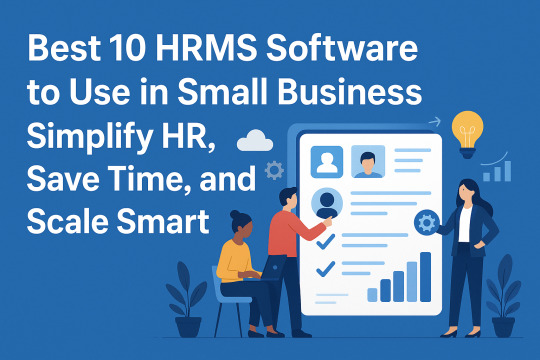
For small businesses, every resource counts—and that includes time, money, and people. Managing HR manually can quickly become overwhelming, leading to errors, inefficiencies, and frustrated employees. That’s why more small businesses are turning to HRMS (Human Resource Management Systems) to automate routine tasks, improve compliance, and create a better employee experience.
The good news? You don’t need an enterprise-sized budget. There are excellent HRMS solutions designed specifically for small and growing businesses.
Here’s our curated list of the 10 best HRMS software for small businesses in 2025, each offering features, ease of use, and pricing that fit your needs.
1. One24 HRMS
Best for: Small businesses wanting modular HR with project & asset tracking
One24 offers a comprehensive suite for small and medium businesses that goes beyond typical HR to include project tracking, asset management, and more.
Employee directory & records
Attendance, leaves & expense management
Customizable modules for scaling operations
2. Zoho People
Best for: Growing small businesses seeking modular, affordable HR Zoho People is popular among small and mid-sized businesses for its customizable modules. It offers leave management, attendance, onboarding, and performance reviews, with flexible pricing that scales as you grow.
Easy integration with Zoho suite & other tools
Self-service portals for employees
Mobile apps for on-the-go HR tasks
3. BambooHR
Best for: Small businesses wanting intuitive HR with strong culture tools BambooHR focuses on making HR simple and people-focused. It handles hiring, onboarding, e-signatures, PTO, and performance management, all wrapped in an intuitive interface.
Excellent onboarding workflows
Employee satisfaction surveys
Simple reporting dashboards
4. Gusto
Best for: Small teams that want HR + payroll in one Gusto shines by combining payroll, benefits, compliance, and basic HR features. It’s especially loved by startups and US-based SMBs.
Automatic tax filings & compliance
Employee benefits administration
Transparent, flat-rate pricing
5. Keka
Best for: Indian SMEs looking for robust payroll + HR Keka offers powerful payroll processing, attendance tracking via biometric or GPS, and performance reviews. Great for businesses in India needing strong compliance.
Automated TDS & EPF filings
Project & timesheet management
Employee self-service portals
6. Freshteam by Freshworks
Best for: Small companies with active hiring needs Freshteam combines ATS (Applicant Tracking) with core HR tools like onboarding, time off, and employee database. It’s budget-friendly and integrates easily with other Freshworks products.
Kanban-style recruitment pipeline
Automated interview scheduling
Free tier for very small teams
7. Paycor
Best for: Small businesses wanting US payroll + compliance Paycor delivers solid payroll, tax filing, HR admin, and onboarding tools with industry-specific templates, making it easier for regulated sectors.
Learning management and certifications
Powerful reporting tools
Mobile-friendly employee self-service
8. Zenefits
Best for: Small teams needing benefits-focused HR Zenefits is streamlined for benefits administration along with time, scheduling, and compliance. It automates complex benefits and insurance processes.
Integrated benefits shopping & management
Compliance calendar & alerts
Integrates with dozens of apps
9. greytHR
Best for: Small Indian businesses needing compliance-heavy HR greytHR automates payroll, statutory compliance (PF, ESI, TDS), and attendance. It’s trusted by thousands of SMEs across India.
Employee document management
Payroll-ready statutory reports
Mobile app for employees & managers
10. Deel (for global teams)
Best for: Small businesses with international hires If you’re hiring remote contractors or employees abroad, Deel simplifies contracts, local compliance, and global payroll—all in one.
Handles payments in 120+ countries
Automatically generates compliant contracts
Employee/contractor dashboards
How to Choose the Right HRMS for Your Small Business
When selecting an HRMS, consider:
Your core needs: Payroll? Leave? Hiring? All-in-one? Ease of use: Your small team doesn’t have time for complex setups. Local compliance: Especially important if you operate in regulated markets. Cost: Look for software that fits your current size but can scale. Support: Responsive support makes a big difference for small teams.
Final Thoughts
Investing in the right HRMS isn’t just about saving time—it’s about building a professional, people-first workplace that attracts and keeps talent. Whether you’re a startup or a growing SME, these tools can free up your energy to focus on what matters most: your business and your people.
0 notes